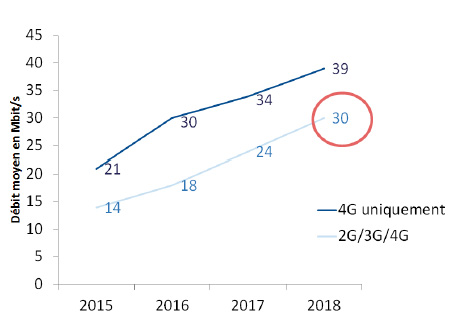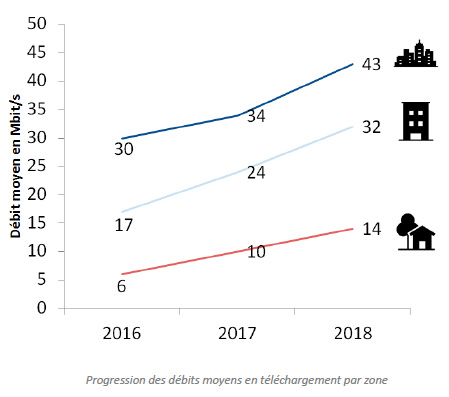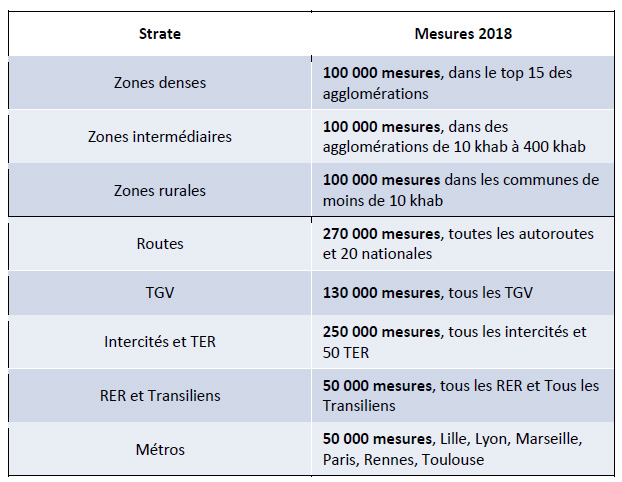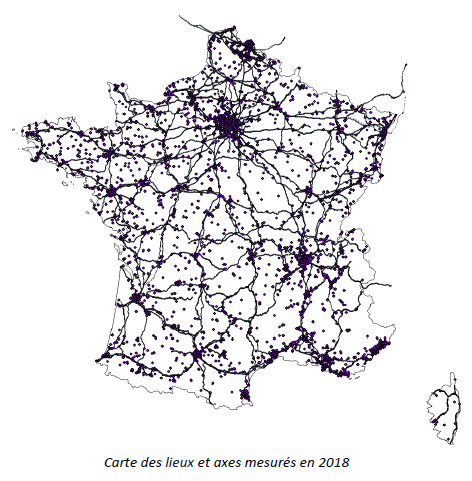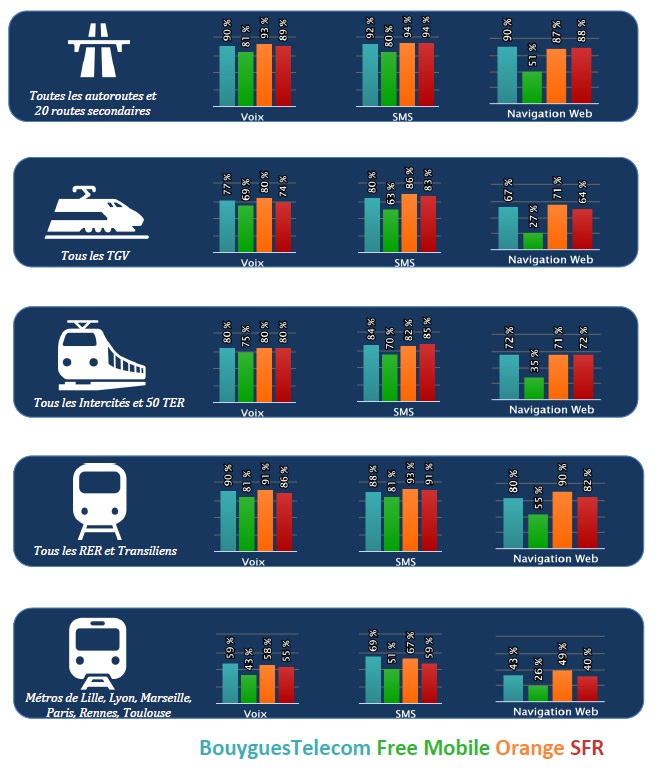Arcep is publishing the findings of its 19th annual audit to assess the quality of the services provided by mobile operators in Metropolitan France. More than million tests were performed on 2G, 3G and 4G networks across the country, in every department, indoors and outdoors, and on various forms of transportation. The audit covered the most widely used mobile services: web browsing, playing videos, data transfer, texting and voice calls. The tests performed sought to evaluate the performance of operators’ networks in a strictly comparable fashion, and this in an array of circumstances.
The quality of all operators’ mobile internet (data) services is improving
On all four operators’ mobile networks, the quality of data services is improving, and this in every type of area: rural, medium-density and high-density. Orange scored highest on all measurement campaigns. In most instances, Bouygues Telecom scored higher than SFR. And, although it has made progress, Free Mobile scored considerably lower than the other three on a large number of indicators.
In rural areas, Bouygues Telecom scored the highest across the board, just ahead of SFR then Orange. Free Mobile’s lower scores can be attributed in particular to the fact that its 4G coverage is less extensive than the other three operators’.
There are significant disparities in quality levels between the operators: Arcep invites everyone to compare the findings, each according to their own needs.
Average mobile datarate in Metropolitan France stands at 30 Mbit/s
According to Arcep’s findings, the average speed of mobile connections continue to increase. In particular, and for the first time, the average downlink speed measured in Metropolitan France – all technologies combined, all operators combined, and all areas combined (rural, medium-density and high-density) – stands at 30 Mbit/s. Looking only at 4G networks, datarates continue to climb and have reached an average 39Mbit/s.
Rural areas: the progress made by all operators has not yet closed the enduring gap with high-density areas
If these improved results reflect the efforts that operators continue to make to expand their 4G coverage, a large number of locations are still without coverage today. In rural areas in particular, although the measured speeds continue to improve, average datarates are still well below those supplied in the country’s medium-density and high-density areas. Operators’ efforts to deploy 4G and provide their customers with high standard data services must therefore continue, and so close the performance gap between rural and more densely populated areas. This is one of the key objectives of the New Deal for Mobile.
Scope of the audit and new additions in 2018
The scope of the audit, which was expanded considerably in 2017, remained the same in 2018:
- Regarding living environments, hundreds of thousands of measurements were taken, in large cities, mid-size cities and in rural areas, and this in over 1,500 municipalities, so that the results be as representative of the real life experience of people in France;
- Regarding transport corridors, tests were performed on every TGV (high-speed train) line, all inter-city train lines, all motorways, some twenty secondary road corridors, more than 50 TER (regional rail) lines, every RER (commuter train) line, every Transiliens (Paris suburban rail) line, and every metro line.
The following were incorporated into the mobile QoS audit for the first time in 2018:
- main international rail lines (Thalys, Eurostar, etc.);
- some 20 popular tourist locations, including Mont-Saint-Michel, the Palace of Versailles and the Calanques de Piana.
Updated QoS maps on Monreseaumobile.fr and open data files
The detailed results, which can be found in the annex, in addition to being published on monreseaumobile.fr and available as open data files, allow anyone to compare the quality of operators’ services, for those applications that matter to them: calling, mobile internet, in high-density areas, rural areas, on train lines, roadways, etc.
[Translate to Anglais:] Annexe 2 : synthèse des résultats 2018
[Translate to Anglais:]
L’ensemble des résultats sont disponibles sur monreseaumobile.fr
[Translate to Anglais:] Les documents associés
- map-based visualisation tool: monreseaumobile.fr
- open data: https://www.data.gouv.fr/fr/datasets/monreseaumobile


